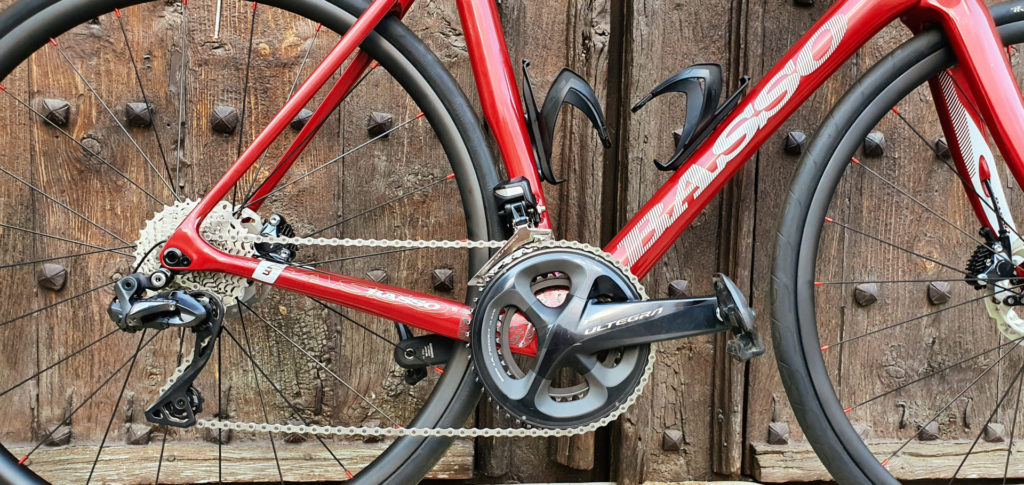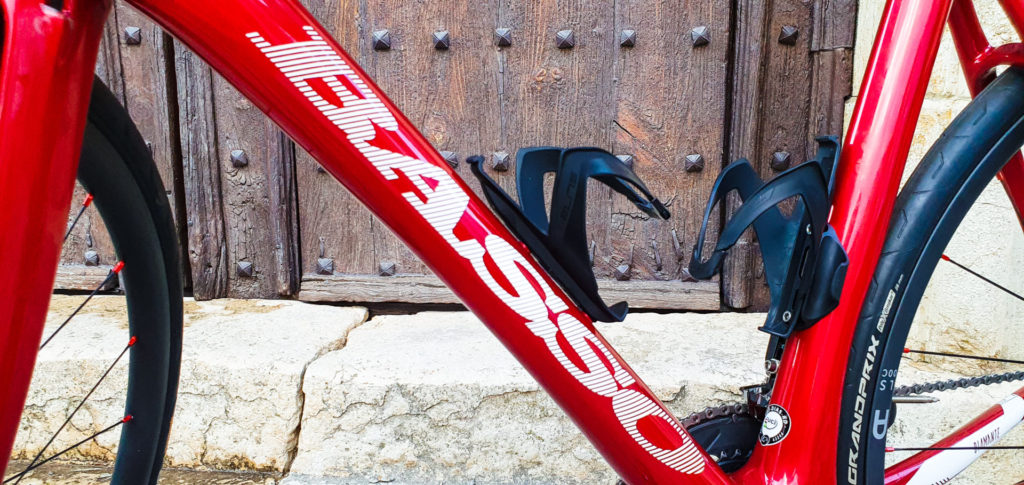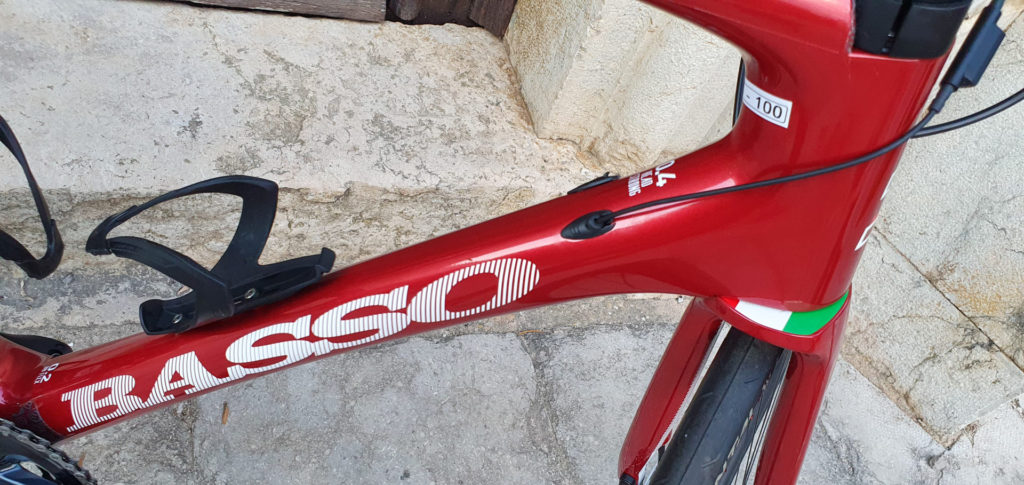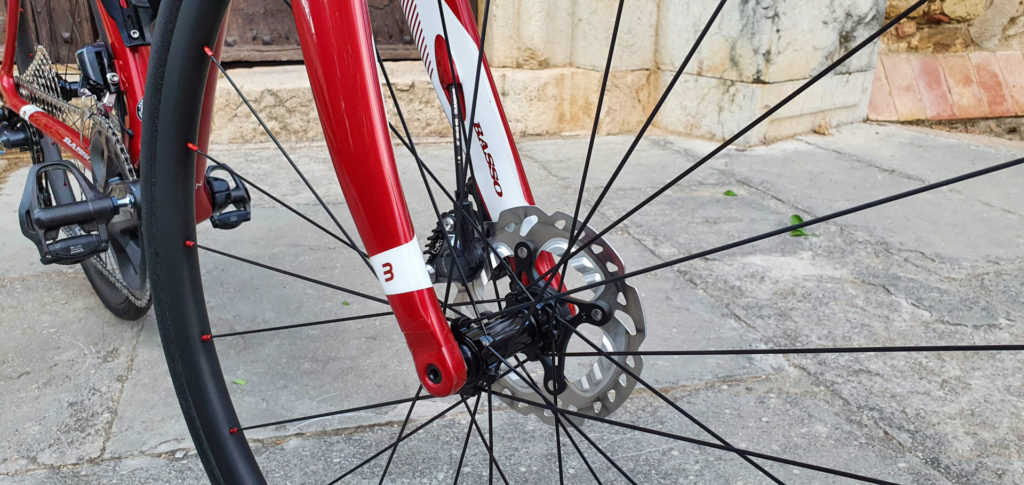Corsica Cycling Tour
Riding Days
5
Number of Nights
4
Total Distance
380km
Total Climbing
10,500 metres
Difficulty
3/5
At a Glance
Corsica Cycling Tour is a trip to a cyclist’s haven, an island of mountains nestled in the Mediterranean. A land that time forgot, with no high-rise buildings, no fast food, and no motorways, just expanses of unspoilt coastline and countryside.
It came to the cycling world's attention when the Tour de France held the Grand Depart in 2013 with three spectacular and popular stages on the island.
This trip has been designed to showcase the beauty of the island, known as L'île de Beauté.
Your route will start in the south, in the capital Ajaccio - a beautiful port city. From there you'll experience the rugged coastal roads before entering the higher peaks of the interior of the island and finally arriving at the opposite side, the northeastern tip, close to the thriving city of Bastia.
Along the way you will see why this island holds so much mystic, The fiercely independent and proud Corsicans having been ruled by Italy and now France have a rich cultural history to indulge in on your ride across the island.
Tour Highlights
-
Asphalt
Book Tour
Overview
Corsica Raid - L'île de beauté
Beautiful is a word that is easily bandied about when describing some destinations, but the geographical diversity and unique sensory-overload experienced on a visit to Corsica justifies its official title as Island of Beauty (L’Ile de Beauté).
As well as being blessed with dramatic landscapes and improbably precarious roads, the heady combination of rich history, distinctive cuisine and passionate people make Corsica a truly memorable cycling destination. Pedalling past golden beaches, meandering along the undulating coastal roads and into the Corsican landscape you will wonder why you haven’t discovered Corsica sooner.
Most Corsican villages offer plentiful opportunities to fill your bottle, as springs were the epicentre of ancient village life and are now a welcome sight for thirsty cyclists.
Corsicans are fiercely proud of their unique island and identity. This is reflected in the distinctive Genovese-based language they speak.
One theory behind the choice of the Moor’s Head as the island’s emblem is that it represents the vanquishing oppressors and the ability to confront destiny. Tourists won’t encounter problems, though; the islanders merely shout “bon route” as you pedal away.
Le Tour 2013
To celebrate the 100th edition of the Tour de France, the Grand Depart spent three stages in Corsica in 2013. With a flat opening stage from Porto-Vecchio to Bastia along the island’s east coast, a hilly second stage from Bastia to Ajaccio raced south-west through the island’s mountainous interior and another hilly stage up the west coast from Ajaccio to Calvi.
While Corsica is anything but a flat island — it has more than 20 peaks higher than 2,000m. You will get the chance to cover the same roads as the pros did in 2013, a year where Chris Froome claimed and won the yellow jersey for the first time.
Climate
October is a very pleasant time to visit Corsica. Temperatures are generally between 20 and 27 degrees C in the daytime, and cooler at nights.
The autumn just begins, so the scenery should be spectacular. As always, it’s a good idea to pack some light rain gear just in case. A gilet and arm warmers should suffice to keep you warm on the descents.
Gearing
Corsica has varied terrain from coastal rolling roads to mountains.
In order to get the most out of the trip, we recommend you use a compact chainset (34-50) with a 30 or 32 lowest gear on the cassette.
Details
What's Included
*Meals are included up to a specific budget after which a supplement will be applied
What's not Included
Itinerary
Set between spectacular mountains and a bay with a clear, calm sea, Ajaccio, the capital of Corsica was a land conquered by important Mediterranean civilizations, such as the Greeks, Romans and Arabs, the island of Ajaccio has managed to retain a strong cultural identity, and the city has preserved its unique appearance even within the island.
However, it is the memory of the city’s most illustrious citizen, Napoleon Bonaparte, who was born here in 1769, that has left the most visible mark.
Even the port is spectacular and since ancient times has been considered extremely safe; a port that gave its name to the city as it was once called Agation, which means “safe harbour”.
Your La Fuga guides will meet you at Ajaccio Airport and take you to your accommodation at Radisson Blu Hotel; this drive will be just half an hour.
After assembling the bikes and depending on arrival time you should have time to test the legs out with a loosener ahead of dinner.
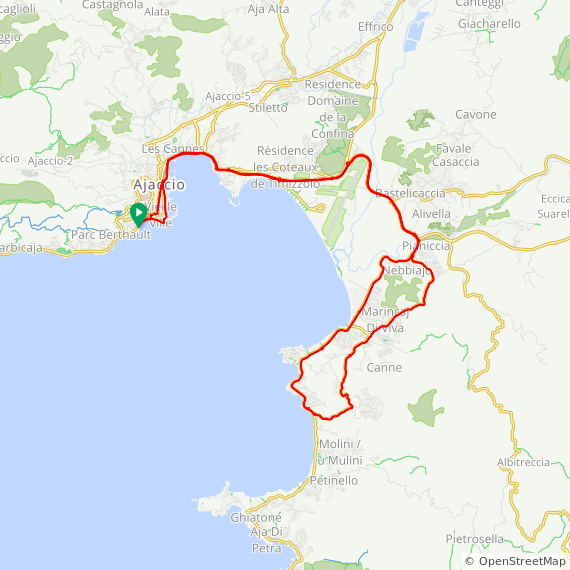

Leaving Ajaccio, hugging the coastline after climbing Bocca di Preno, Col de Carbinica and Col de San Bastiano, the route is just as Corsica itself; rolling terrain. It rises and falls gently, weaving its way across creeks that cascade down into the Mediterranean sea.
This route sometimes feels like it has been hand-made for cyclists. The surface is a little ‘interesting’ in places but overall a smooth ribbon to enjoy your first day on the island.
You will descent to Golfu di Liscia to touch the Mediterranean Sea before rapidly ascending towards Bocca Di Sant Antonio, Monte Rossu, Bocca Di Sarzoggiu, Bocca Di Pianu d’Arboir and downhill back to Ajaccio.
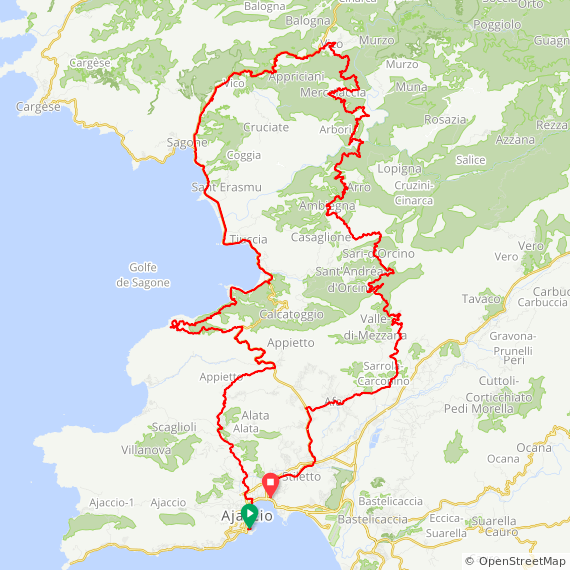

Leave Ajaccio from the eastside, Bocca Di Sant Albertu, Starting from Pisciatello, the Bocca di Sant’Albertu ascent is 14.4 km long. You climb 522 meters over this distance with a pleasant average ascent percentage of 3.6%.
You’ll take the Bocca di Marcujolu, then Col de Menta to the top of Col de Scalella The road over the pass is narrow, and includes several hairpins. You will find it more challenging through the village in your lowest gear around demanding hairpin corners to accomplish the 6 kms from Bastelica with a 7% average gradient.
The Col de Vizzavone divides the island between Corse du Sud and Haute Corse.
The climb starts in Vivario right in the centre of the island. With 12.4 km long, you will gain 503 height meters and an average of 4.1 %
The last climb of the day is Col de Belle Granaje and a series of undulations to your new accommodation where you have deserved a refreshing drink to celebrate a great day on the bike.
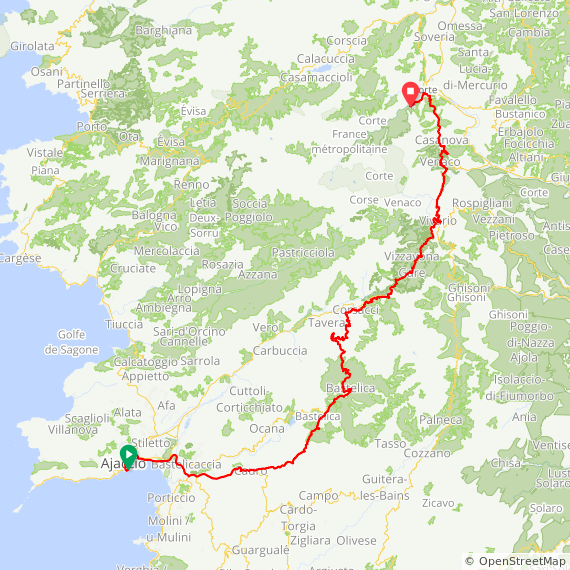

Following your path towards the north of the island, your first climb today is Bocca d’Ominanda. The challenge in this first cote remains within manageable limits at 4kms long and 250m ascent.
Croce d’Arbitro will be the next one on your list. North of the Col d’Ominandas almost to Ponte Leccia a superb winding Mountain road, made for cyclists.
A succession of three cols, Ravin de Pietra Sorda, Bocca di Foscatello and finally Col de Bigorno. You should ride it up the to the summit as the winding and narrow mountain road is a spectacular mountain pass gem.
You will find on the south side of the village Bigorno a high alpine seeming landscape. In contrast, on the north side, you drive through a mostly dense “primeval forest” of shrubs and bushes.
In the north of the pass, you pass near the church of San Michele de Murato. The Romanesque church dates from 1280 AD and is one of the great attractions of the Mediterranean island; Correspondingly often this building is also reflected on the postcards of Corsica, definitely worth a stop.
The last climb is Col de Teghime which will bring you to the Region Bastiaise to arrive at your hotel along the east coast to Erbalunga
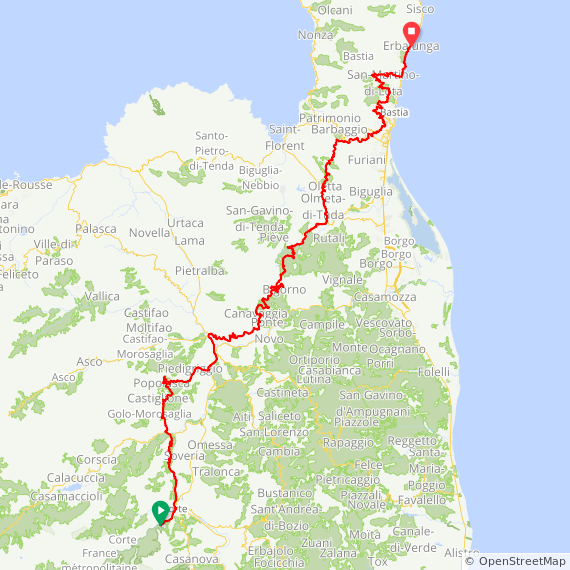

Accommodation
Situated on the western shoreline of one of the Mediterranean’s most beautiful islands, Radisson Blu Hotel rests on Agosta Beach outside the village of Porticcio. A short trip around the bay takes you to the Imperial City of Ajaccio, the historic birthplace of Napoleon Bonaparte.
A seaside location makes the perfect getaway for beach enthusiasts. Soak up the sun on one of the many local beaches. You can also find relaxation at the upscale spa, which houses a sauna, hammam, relaxation pool or relaxation lounge.
In the heart of the Restonica Valley (ranked as a ‘Grand site de France’), only a few minutes from Corte, the Dominique Colonna Hotel offers an enchanting setting on the banks of the river where you can experience tranquillity immersed in nature.
The undeniable charm of the Hotel is the sounds of nature, making you seem far away from the hustle and bustle of the city, allowing you to rest and relax after a satisfying ride.
A swim in the clear water of the river, with its natural pools and granite pebbles, is a great way to cool down on a hot summer’s day. If you prefer milder temperatures, the hotel’s large private swimming pool, heated to 27°C, is definitely for you.
In the same enchanting setting next to the hotel, you will have the opportunity to taste traditional dishes such as roast lamb, or other dishes with a twist such as risotto with brocciu (broccoli).
Settled in an authentic patrician mansion of the XIXth century, the Hotel is surrounded by a splendid Mediterranean garden with numerous century-old palm trees.
Castel Brando is a real haven of peace, comfort and evasion. Offering a heated pool and Jacuzzi set amongst the gardens combined with spa facilities, you will have the opportunity to rest in style after your ride across the island. The Castel Brando is one of the famous and typical « American’s Houses » of the Cap Corse.
The mansion was built in 1853 by a doctor of the Napoleonic army and was later taken over and improved by a local upon his return from Saint-Domingue, where he had spent several decades. Like many people from the Cap Corse at the time, he went to the Americas and then returned to his native Corsica having made his fortune.

